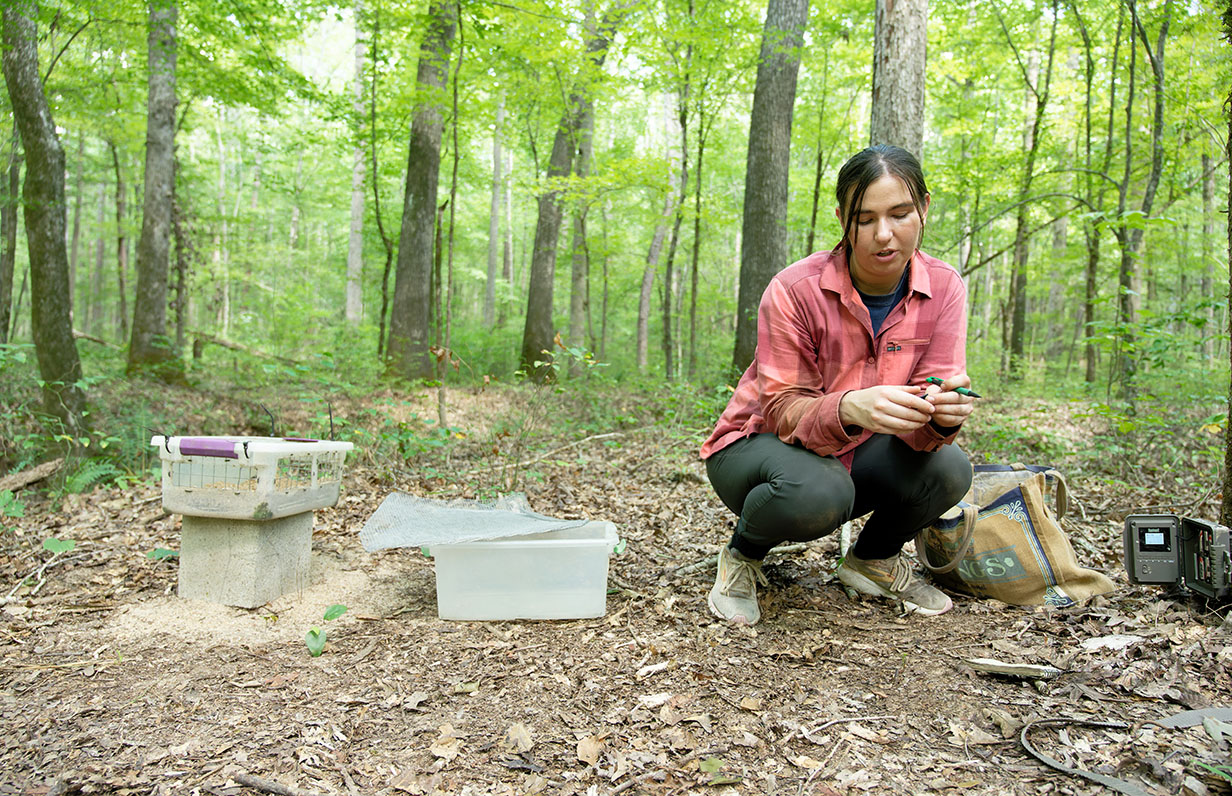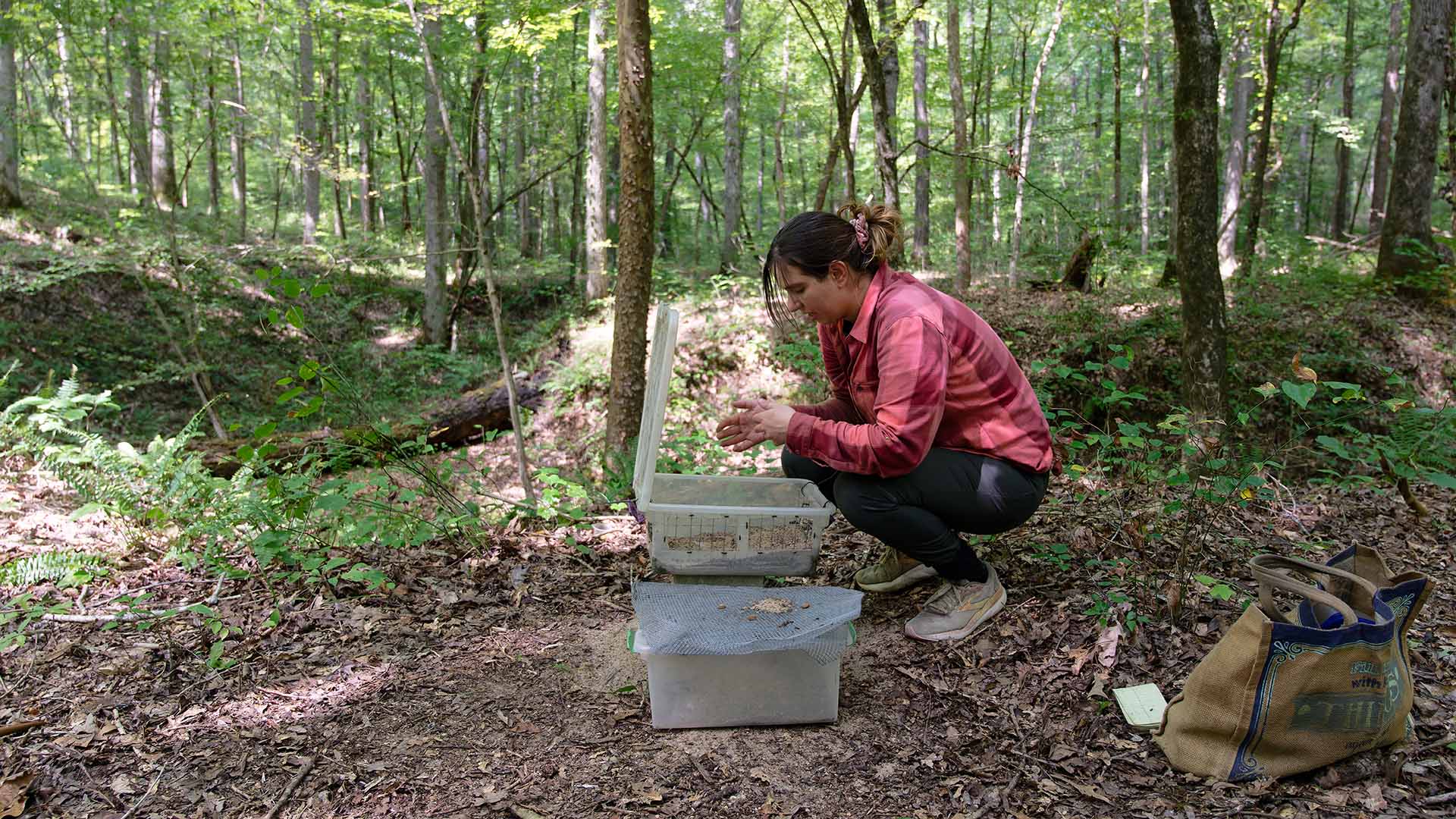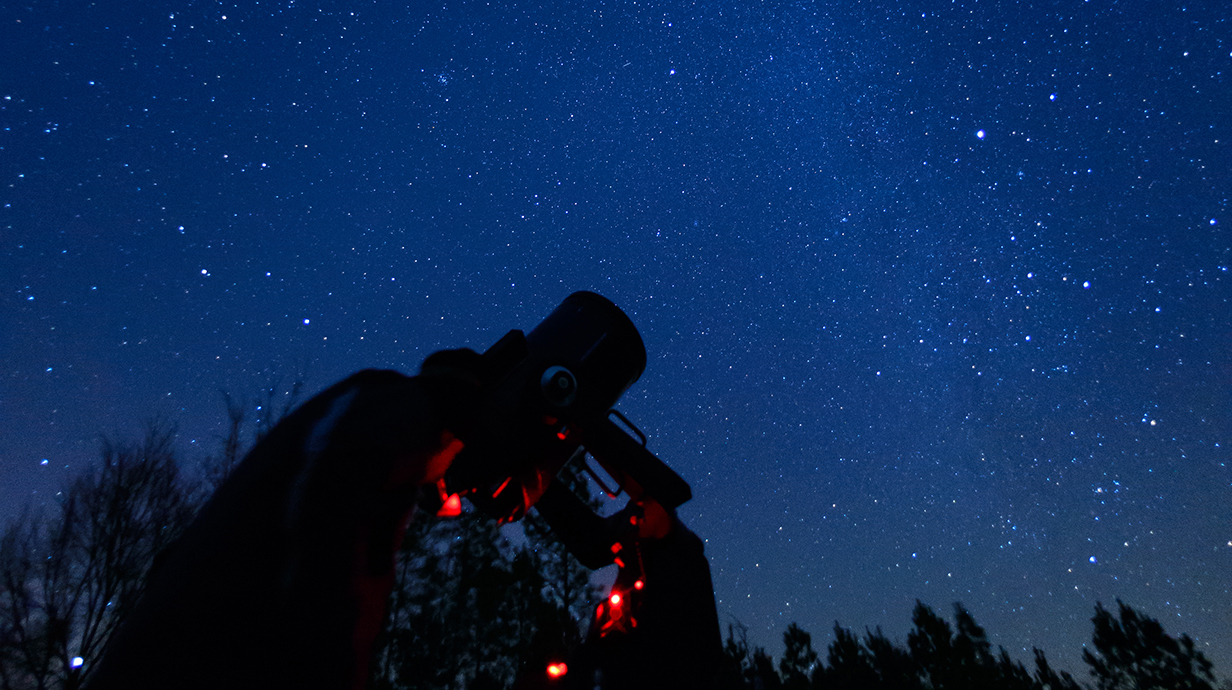Ghosts of Predators Past: UM Student Studies Raccoon Scent Memory
Study could have impact on conservation, protecting endangered species
They are known for their clever paws and masked faces, but raccoons might also have an unexpected survival skill: remembering scents of predators they have never met.
University of Mississippi doctoral student Jessica Stamn is studying whether raccoons respond to the scent of predators that no longer live in north Mississippi. If they do, the scent of pumas or wolves could be used to keep raccoons away from the nests of endangered wildlife.
"In Jessi's project, she's trying to understand whether raccoons alter their foraging according to their perceived risk of being eaten by a predator," said Richard Buchholz, director of the Center for Biodiversity and Conservation Research. The center funded Stamn's summer research, and Buchholz is Stamn's adviser.
"So, she's actually introducing odor cues and sound cues of predators that aren't here anymore and wants to know whether raccoons still retain what we call the 'ghosts of predators past.'"
More than 100 years ago, predators such as red wolves, pumas – also called cougars, panthers and mountain lions – and black bears prowled Mississippi. But human infrastructure and activity have cut off much of their habitat in a process called extirpation, or local extinction.
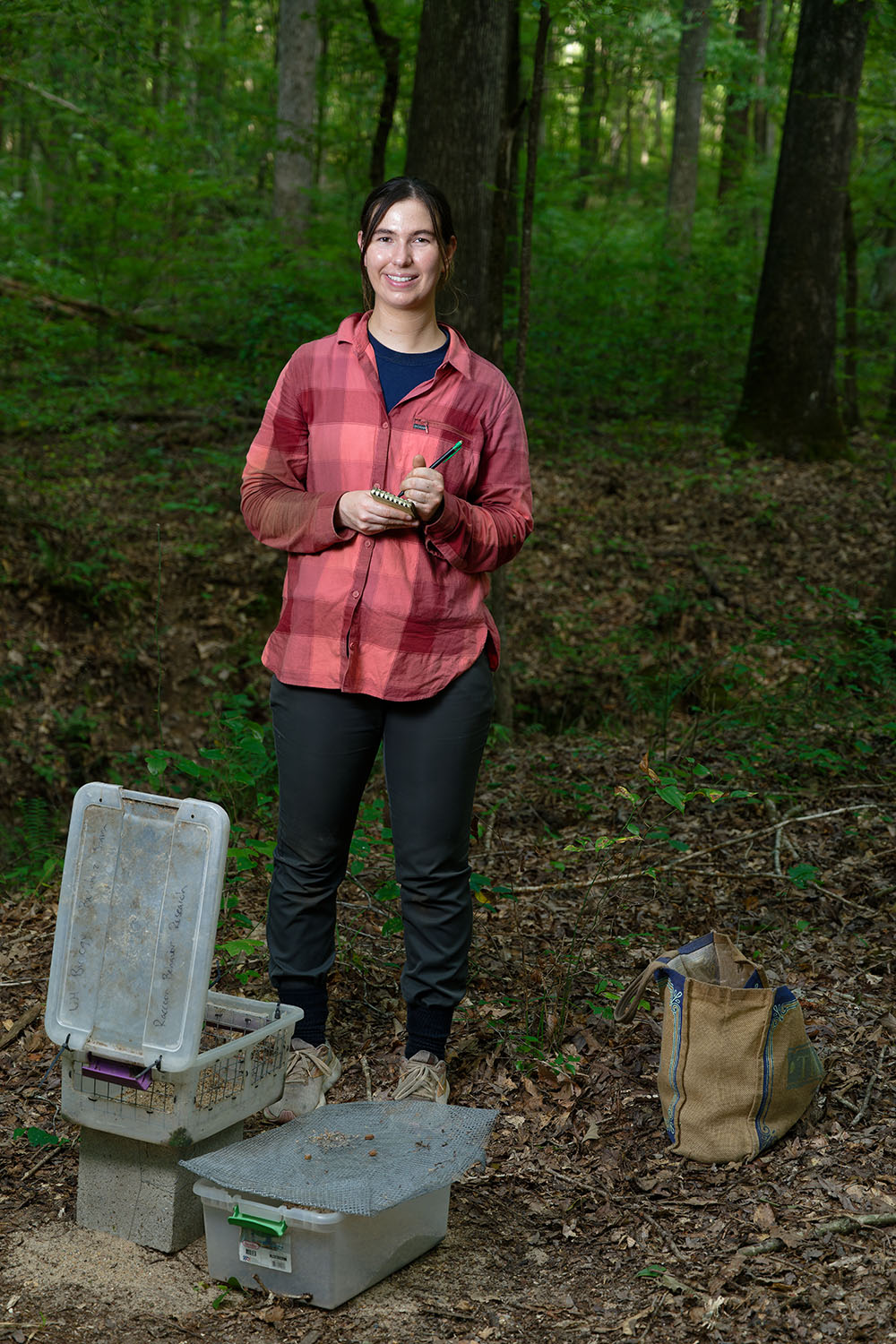
Conservation efforts have contributed to the return of the black bear, but wildlife experts count fewer than 150 of them in the state.
With the loss of those apex predators, smaller hunters such as raccoons have thrived.
"Those mesopredators – foxes, raccoons, possums, skunks – they're changing their behavior without the larger predators around," said Stamn, a sixth-year biology student from Waukesha, Wisconsin. "They're taking more risks to get food and taking longer to actually eat it.
"Essentially, they're eating everything."
Everything, unfortunately, includes the eggs and young of many ground-nesting endangered species, including terns, tortoises and sea turtles.
Previous studies have shown that when a prey species co-evolves with a natural predator, that prey continues to react to scents and sounds of those predators, even if they are no longer active in the area.
"It's an adaptive response," she said. "If they smell these urine cues from wolves, they're going to respond with the behavior that's going to allow them to survive, even if they've never experienced that predator before."
Other studies, however, have contested that some mesopredators must learn to avoid predator scents. Stamn wants to find out which theory is correct when it comes to raccoons.
Over the summer, Stamn tracked raccoons in north Mississippi to see how they respond to scent and sounds that would come from predators. Though the research is ongoing, the preliminary findings hint that raccoons may possess some predator memory.
"They do actually exhibit behaviors that seem adaptive to responding to that predator scent and sound, but there's a lot of variation in that," she said. "So, we thought maybe the variation had something to do with body condition."
“She's actually introducing odor cues and sound cues of predators that aren't here anymore and wants to know whether raccoons still retain what we call the ‘ghosts of predators past.’” – Richard Buchholz

Stamn is testing the hypothesis that fatter, healthier raccoons are less likely to risk their lives for food if a predator's scent is near. But if the raccoon is smaller, it is less willing to waste energy by abandoning the pursuit of food.
"They can't waste the energy to go and search for a different food source and then fight other raccoons or worry about predators in that area," she said. "So, they are willing to take the risk."
This fall, Stamn plans to test whether placing predator urine around artificial nests will deter raccoons from foraging nearby. If it does, using predator markers could help conservation efforts across the South.
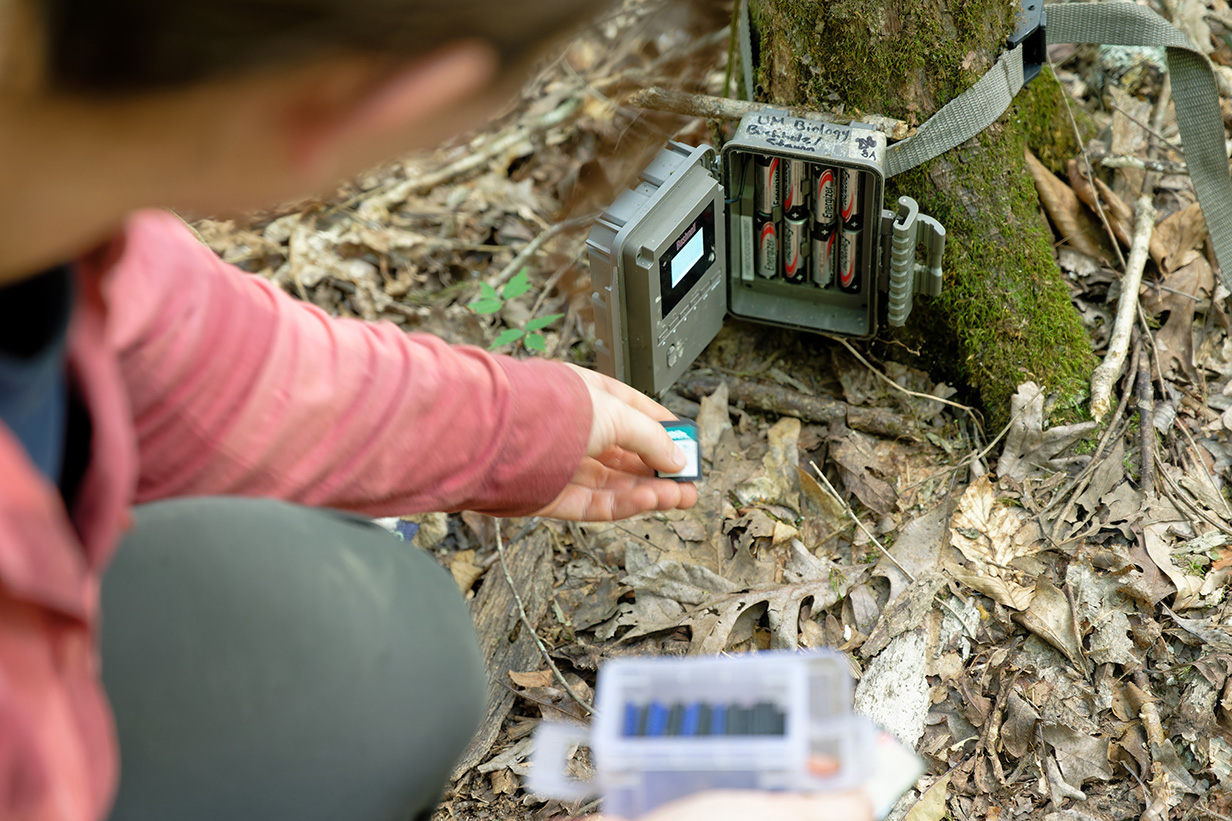
Biology graduate student Jessica Stamn retrieves a memory card from a trail camera at the UM Field Station in Lafayette County. Stamn uses trail cameras set up near feeding stations to observe raccoon behavior over time and under different conditions. Photo by Hunt Mercier/Ole Miss Digital Imaging Services
"I came to this program knowing that I wanted to research how animals perceive and respond to their environment – and how that can help us with conservation programs," she said. "Conservation is often responding to problems that we have created.
"Understanding how the relationship between apex predators, mesopredators – like the raccoon – and their small prey is important to understanding how to protect species that we care about and that are important to the ecosystem."
The Center for Biodiversity and Conservation Research provides funding for Ole Miss students contributing to conservation-focused research. To support the center, click here or contact Richard Buchholz at byrb@olemiss.edu.

